From the absence of svabhava to dependent origination
“It is dependent origination that we call emptiness.
It is a dependent designation and is itself the Middle Path.”
(Nagarjuna, Mūlamadhyamakakārikā)
A “second Buddha”
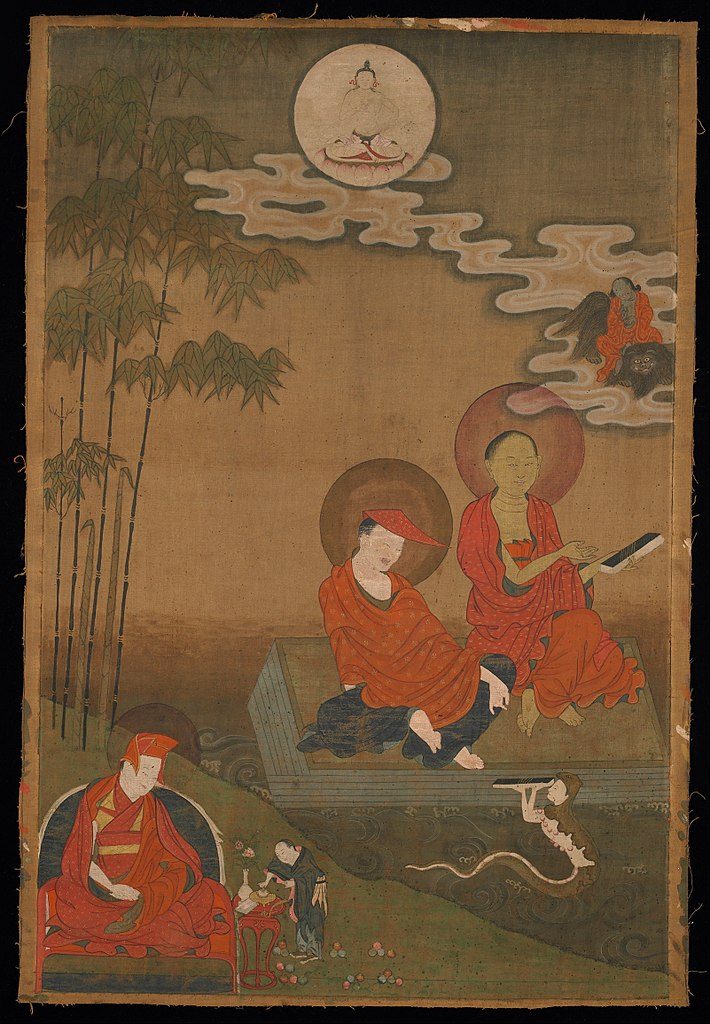
Nagarjuna is widely regarded as a “second Buddha,” as well as one of the greatest thinkers in the history of Asian philosophy. Credited with the founding of the Madhyamika (Middle Way) school, he and his main disciple Aryadeva provided the Mahayana tradition with a sophisticated and enduring philosophical framework. The Madhyamika is also referred to as Sunyavada, the “doctrine of emptiness (sunyata).” Nagarjuna’s inquiry started with the traditional Buddhist definition of emptiness as an absence of svabhava, and took him to an equation of emptiness with dependent origination (pratityasamutpada), a doctrine which the Buddha had put forward, but left relatively undeveloped. Dependent origination is also the philosophical concept underpinning the path of practice of the Two Truths, a Mahayana reformulation of the Middle Way.
We know very little for certain about Nagarjuna’s life circumstances, and the works he wrote. One of the reasons for this is that there seems to have been at least two, perhaps three, Nagarjunas, a philosopher who lived in the Andhra region in the second to third centuries CE, a tantric adept who lived around 400 CE and an alchemist who lived in the 7th century.
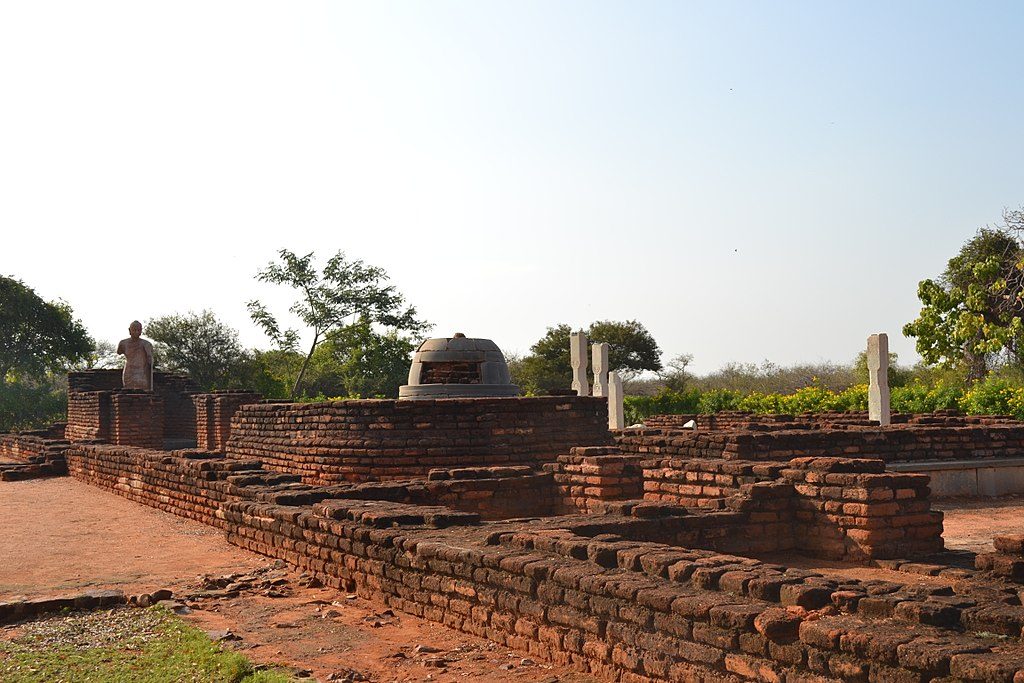
Nagarjuna the philosopher (c. 150-c. 250 CE, based on his association with Satavahana king Yajna Sri Satakarni) is said to have lived in Sriparvata (present-day Nagarjunakonda), a mere 160 km from the site of the Amaravati Monastery, where the first Prajnaparamita Sutra is believed to have been composed. In fact the region, where Buddhism had been introduced by Asoka, has recently attracted the attention of scholars, whose research papers have been published in Buddhism in the Krishna River Valley of Andhra. The introduction of this publication starts with the claim that,“such pivotally important Mahayana Buddhist thinkers as Nagarjuna, Dignaga, Candrakirti, Aryadeva and Bhavavika, among many others, formulated their theories while living in Buddhist communities in Andhra.”
Among the many works associated with an author named Nagarjuna, six have been assessed to be the works of Nagarjuna the philosopher, and among these, scholars have focused on the Mulamadhyamakakarika (Fundamental Verses on the Middle Way), often using later commentaries by Candrakirti (c. 600 – c. 650 CE) and even the much later Tibetan Tsong kha pa (1357–1419) as additional resources.
To be empty is to be empty of svabhava. But what is svabhava?
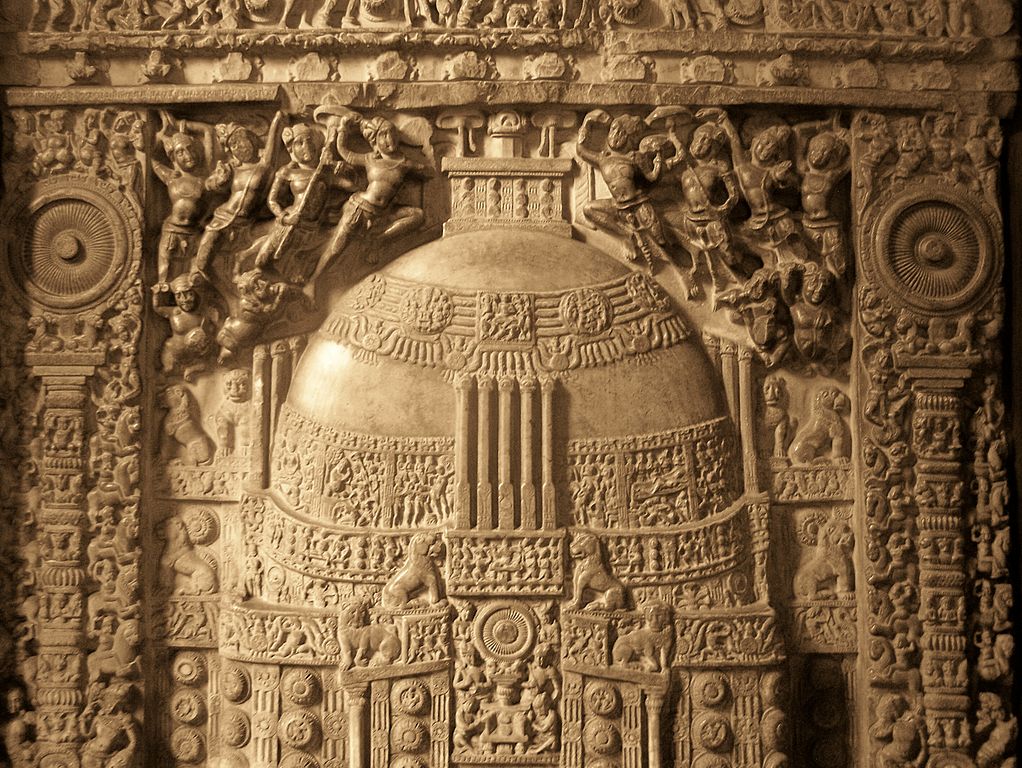
When he embarked on his attempt to elucidate “the way things really are,” Nagarjuna’s intention was to return to the core teachings of the Buddha. He therefore revisited the Buddha’s revolutionary claim that the self was empty of “own being” (anatman). It was not, as Brahmanism had claimed, an “unchanging essence” (atman) which it shared with Brahman, the Cosmic Self. Instead, the self was the product of conditions (the five skandhas) and it therefore changed as conditions changed. The Sanskrit word Brahmanism used for “unchanging essence,” was “svabhava.” It was said that Brahman was svabhava, and so was the individual atman. Svabhava represented the transcendental order of the cosmos, the unchanging nature of ultimate reality beyond the ever changing world of phenomena that shapes our lives, seemingly caught up in a stormy sea of impermanence. Svabhava as viewed in the Brahmanical culture characterised ultimate reality as permanent (an unchanging essence), and described the impermanence we encounter in our lives as illusory.
As he asserted that the self was empty of “own being,” the Buddha was in effect saying that the self was empty of svabhava, and it could be assumed that he also asserted that all things – reality itself – was empty of svabhava, thus creating an inverted parallel to the mainstream Brahmanical view. “No svabhava in either the self or “things,” mirroring the Brahmanical “svabhava in both the self and the cosmos.”
Generations of Buddhist thinkers tried to work out in what way “all things” – then referred to as “dharmas” – were to be thought of as empty of svabhava. Endless debates led to a variety of views, with most scholars arguing that the things we see were indeed empty of svabhava as they simply represented the concepts our minds had projected upon undifferentiated reality for purely practical reasons. For many scholars, however, svabhava could still be found at the level of the “building blocks” of reality. The reason for the confusion is that svabhava did not just mean “unchanging essence,” it also meant “sub-stance,” that which stands by itself independently of anything else, including our minds. One of Nagarjuna’s achievements was to shift the meaning of svabhava from “unchanging essence” to svabhava as “inherent substance” though, as Jan Westerhoff emphasizes, even after this shift had taken place, svabhava still retained the cognitive dimension which it had as “essence,” which remained subconsciously associated with the notion of ultimate reality.
Essence-svabhava (unchanging essence) and substance-svabhava (inherent existence)
With a whole volume dedicated to a presentation of Madhyamaka, Westerhoff goes in some depth into the meaning of svabhava, which he leaves untranslated because “there is no single term used in Western philosophy that covers the different aspects of its meaning in the Madhyamika context in a satisfactory manner.”
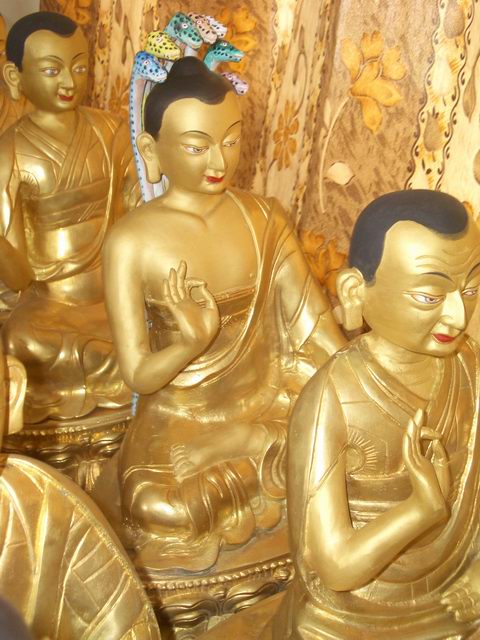
Svabhava is indeed “a very complex concept” combining different aspects which Westerhoff, following a classification proposed by Candrakirti, differentiates into three distinct understandings. He writes: “The first is the understanding of svabhava as essence, as a property that an object cannot lose without ceasing to be that very thing.” It is “the specific characterizing property of an object.” It has a cognitive function inasmuch as “it provides a procedure for drawing a line between a variety of objects with shared qualities and thereby allows us to tell them apart.” The second understanding is “as substance, as something that does not depend on anything else; and the third is what I have called absolute svabhava, as a property that is regarded as the true or final nature of things.” These three senses will be referred to by “the terms essence-svabhava, substance-svabhava and absolute svabhava.”
Westerhoff , however, readily accepts that, even as substance-svabhava figures most prominently in Nagarjuna’s thought, a cognitive dimension remains, insofar as “the notion of svabhava is regarded as a conceptual superimposition, as something that is automatically projected onto a world of objects that actually lack it. Unlike the notion of substance, svabhava is not just a theoretical concept of ontology but rather a cognitive default, an addition that the mind unwittingly makes when trying to make sense of the world.” Since svabhava is a “cognitive default,“ a mistaken superimposition, it is never enough to just explain that “things” do not really exist in the way they appear to exist. I would add here that this “cognitive default” is rooted in what the Buddha regarded as our tendency to become attached to things, reflecting a need for solidity and permanence, forever frustrated by the certainty of death. To overcome both the cognitive default and the trap of attachment, “we will also have to train ourselves out of the automatic habit of projecting svabhava onto a world that lacks it.” We can now see why the Prajnaparamita sutras which were meant to be learned by heart and recited, are so repetitive: their aim was to block off the automatic superimposition of svabhava.
Substance-svabhava, which is translated as “intrinsic, or inherent existence” is “an indication of ontological status. To have svabhava means to exist in a primary manner, unconstructed and independent of anything else.” A sub-stance is that which “stands by itself,” independently of anything else. For the Buddhist, to see “things” as empty of inherent existence is to see them as conceptual constructs, dependent on our minds, and therefore illusory in the sense of not exising objectively outside, independently of our minds.
We can see now how the Buddha’s insight took shape. The notion of svabhava in Brahmanical culture included the two meanings, which were fused together, as yet undifferentiated, and it was the Buddha who had unpacked the hidden fusion. When he stated that the self was empty of svabhava – anatman, that is, not-atman, not an essence – he rejected essence-svabhava, and when he elaborated his doctrine of co-dependent origination – all things arise in dependence upon each other, as pairs of opposites – he rejected substance-svabhava.
Absolute svabhava – the “true or final nature of things.”
This is where we get to the hard part. Following Candrakirti, Westerhoff defines the third meaning of svabhava as the “true or final nature of things.”In Candrakirti’s own words:
“Ultimate reality for the Buddhas is svabhava itself. That, moreover, because it is itself nondeceptive, is the truth of ultimate reality. It must be known by each one for himself.”
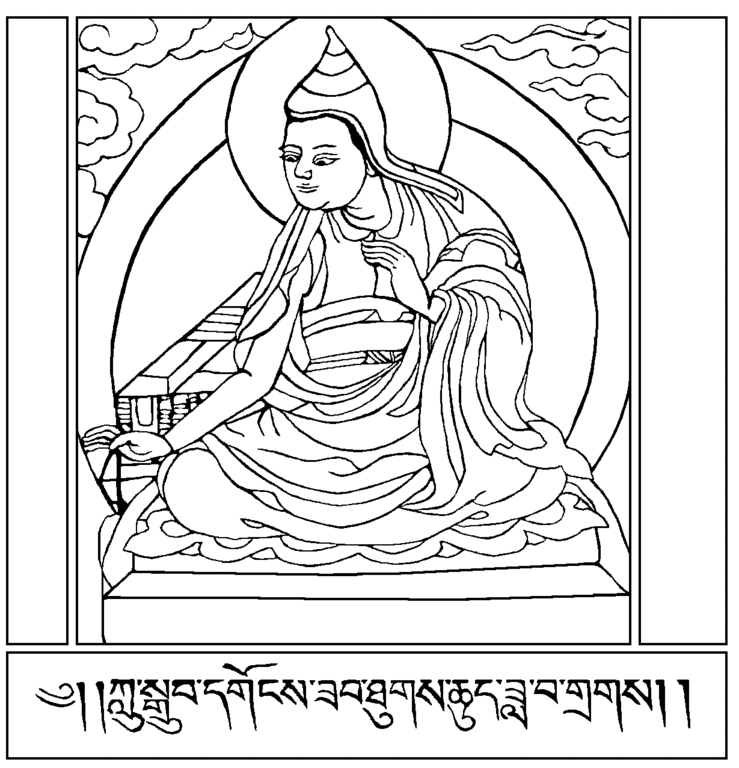
Candrakirti arrived at this conclusion through a triple assertion: ultimate reality, which in Buddhism is sunyata (emptiness), is said to be “changeless, not originated, and not dependent on something else.” These three points were later adopted by Tsong kha pa as the “triple characterization.”
But isn’t this also the very definition of svabhava? As essence, it is unchanging and non-originated, and as substance, it is not dependent on anything else. Candrakirti’s threefold characterization is “supposed to be applicable both to substance-svabhava as well as to emptiness, that is, the absence of substance-svabhava. But taking into account that substance-svabhava is argued not to exist while emptiness does exist, this view faces an obvious difficulty. The lack of svabhava seems to have exactly the properties of substance-svabhava … Emptiness (that is, the absence of svabhava) appears to be a contradictory concept.
Clearly, when Candrakirti states that “ultimate reality for the Buddhas is svabhava itself,” the word svabhava is not used in the sense of either unchanging essence or independent substance, but in the non-descriptive sense of ultimate reality, without indicating how this ultimate reality is defined. This sense of svabhava Westerhoff calls “absolute svabhava” because it corresponds to what Nagarjuna had set out to understand, i.e., the “true or final nature of things” or “the way things really are.”
“It is dependent origination that we call emptiness.”
When Nagarjuna stated that dharmas lack svabhava, he did not mean that they did not “exist” at all. What he meant is that they did not “exist” as they appeared to exist in our ordinary everyday consciousness, that is, as independent substances. So, how did they “exist”? At that point, Nagarjuna left the investigation of emptiness with reference to svabhava, and moved to a different standpoint, that of emptiness described as dependent origination (pratityasamutpada). When he stated that “it is dependent origination that we call emptiness,” Nagarjuna asserted that all things, including emptiness itself, arise co-dependently, and are the products of conditions. He thus explicitly rejected as false two very common mistaken interpretations of emptiness. On one hand, he denied that emptiness meant that “nothing exists at all on any level” – things do exist but as conditioned, not as independent substances. On the other, he warns us against taking emptiness to be “some sort of really existing Ultimate Reality or Absolute – perhaps like the Brahman of Hinduism” (Williams). Emptiness itself has to be emptied, it has to be lived as a process of self-emptying. The term used by Nagarjuna is “emptiness of emptiness.” This self-emptying cannot, however, be carried out by thinking, or at least, not by thinking alone. Practice is required, both on the cushion, and in the course of our everyday lives, aimed at both blocking the superimposition of substantiality, and cutting off our tendency to become attached to things. This is what Candrakirti refers to above, when he writes that “it must be known by each one for himself.”
Sources
Sree Padma & A. W. Barber (Editors) – Buddhism in the Khrisna River Valley of Andhra (2008)
Jan Westerhoff – Nagarjuna’s Madhyamaka – A Philosophical Introduction (2009)
Paul Williams – Mahayana Buddhism: The Doctrinal Foundations 2nd edition (2009)
Anyone interested in a reformulation of Buddhist thought in the language of Western philosophy may have a look at my other blog, dedicated to Nishida Kitaro, Nishitani Keiji and Ueda Shizuteru – https://thekyotoschoolofphilosophy.wordpress.com

